Being a popular eCommerce platform, Shopify offers various features and benefits for businesses looking to sell their products online. However, before making the decision to use the solution, it’s important to consider our Shopify review.
Therefore, in this article, we’ll explore the advantages and disadvantages, as well as a complete Shopify review. Notably, this guide will cover the following sections:
- Pros & cons of Shopify
- Shopify Pricing: How much does Shopify cost?
- Shopify – Ease of use
- Shopify – Design & themes
- Shopify – Payment gateways
- Shopify – Selling features
Shall we begin now? Let’s dive right in!
Pros & Cons of Shopify

Shopify pros
Is Shopify worth it? Here’re some of the major pros of Shopify:
- User-friendly interface makes it easy for businesses to launch an online store, with minimal coding or design experience required.
- 24/7 customer support ensures that any issues with Shopify users are addressed promptly, giving businesses peace of mind and the ability to focus on growth.
- Multiple payment processors allow businesses to cater to a variety of customer preferences, ensuring a smooth and easy checkout experience.
- Customizable themes let businesses create a unique and tailored online store that reflects their brand.
- Various apps and plugins provide businesses with additional functionality and customization options to enhance their online store.
- Effective SEO and marketing tools help businesses attract more customers and increase sales.
- Reliable hosting and security features ensure a seamless experience for businesses and customers.
Shopify cons
Speaking of the pros and cons of Shopify, we surely cannot go without some of its drawbacks, which include:
- The cost of using Shopify can be high, which may not be suitable for smaller businesses or those on a tight budget.
- Customization options can be limited, making it difficult for businesses to achieve a truly unique look and feel for their online stores.
- The process of leaving Shopify can be challenging, as data export and migration can be complicated, potentially leading to lost revenue.
Simplify Shopify Data Tasks with BulkFlow
BulkFlow makes it easy to import, edit, and export your Shopify product, order, and customer data – no coding needed.
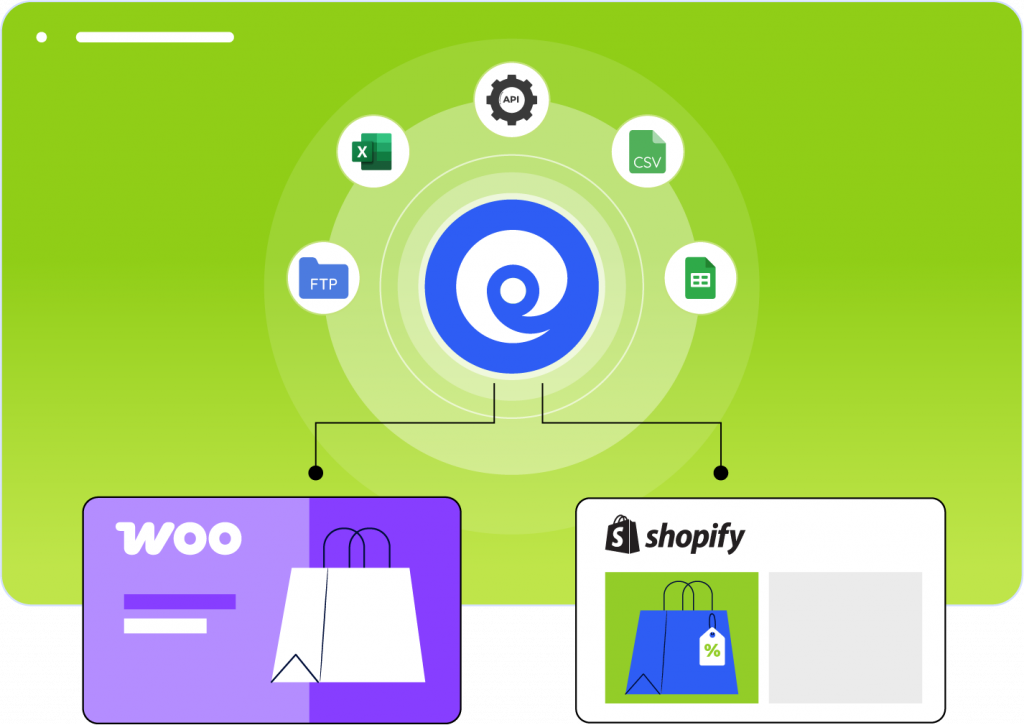
Shopify Pricing: How Much Does Shopify Cost?
In addition to the pros and cons of Shopify, another critical factor businesses must consider is the cost of Shopify.
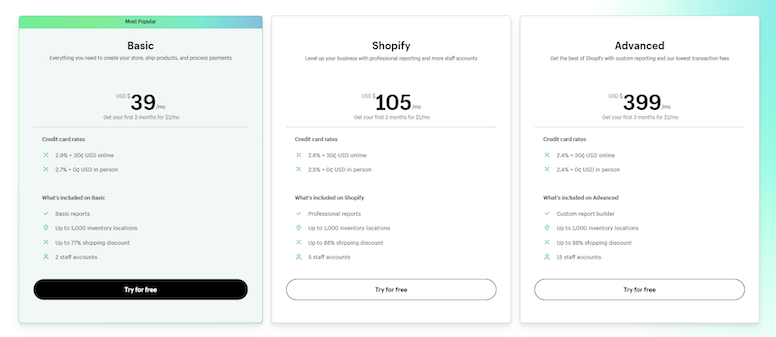
Subscription fees
Shopify offers several pricing plans ranging from $29/month to $399/month, depending on the features and functionalities required. With its three main plans (Basic, Shopify, and Advanced), users can get a 3-day free trial and will be able to test out the features at only $1/month for the first three months.
- Basic Shopify: This plan includes basic reports, website-building tools, up to 1000 inventory locations, 2 staff accounts, and 24/7 customer support.
- Shopify: This plan comes with all the features of the Basic Shopify plan, plus abandoned cart recovery, professional reports, and up to 5 staff accounts
- Advanced Shopify: This plan provides all features of the Shopify plan, plus customer report builders, 15 staff accounts, and third-party calculated shipping rates.
Check out the table below for monthly and yearly subscriptions.
Shopify pricing plans | Monthly subscriptions | Yearly subscriptions |
Basic Shopify | $39/ month | $29/ month |
Shopify | $105/ month | $79/ month |
Advanced Shopify | $399/ month | $299/ month |
Transaction fees
When it comes to Shopify review in terms of monthly fees, Shopify charges transaction fees for each sale made through its platform. The fees vary depending on the pricing plan, with the Basic Shopify plan charging 2.9% + 30¢ per transaction, the Shopify plan charging 2.6% + 30¢ per transaction, and the Advanced Shopify plan charging 2.4% + 30¢ per transaction. However, businesses can reduce these transaction fees by using Shopify Payments, Shopify’s own payment gateway.
Other fees
Next, on the Shopify review, let’s talk about other fees. Aside from the subscriptions & transaction fees, businesses also need to consider other costs when using Shopify. These include:
- App and plugin fees: Shopify’s app store offers a wide variety of plugins and apps that businesses can use to enhance their store’s functionality. While many apps are free, some may require a monthly subscription or a one-time fee, with a range of $20-$70.
- Custom domain fees: Businesses that want to use their own domain name with their Shopify store will need to purchase a custom domain, which can cost anywhere from $10 to $50 per year.
- Third-party payment gateway fees: While Shopify Payments is a popular payment gateway option for many businesses, some may prefer to use a third-party payment gateway. However, these gateways may charge additional fees for processing transactions – 2%, 1%, or 0.5% for Basic Shopify, Shopify, and Advanced Shopify plans, respectively.
For enterprise-level businesses with more significant needs, Shopify offers Shopify Plus, which provides advanced features, personalized support, and the ability to handle high volumes of traffic and sales. However, the cost of Shopify Plus is significantly higher than the other plans, starting at around $2,000 per month, depending on the business’s needs and customization requirements.
Shopify Review: Ease of Use
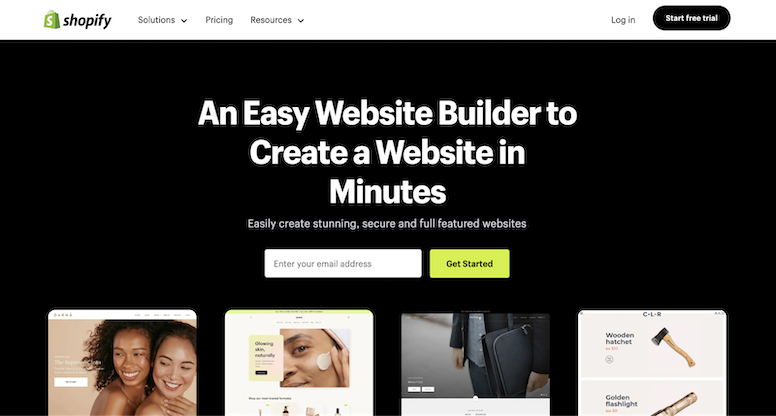
After testing and researching 26+ best-selling platforms, we realize Shopify is one of the most popular one among sellers. This is because of Shopify’s easy-to-use interface, making it a dominant eCommerce solution for businesses of all sizes.
The Shopify website builder includes a drag-and-drop feature that simplifies the website creation process, allowing users to customize their online store’s design and layout without technical knowledge. In addition, its intuitive dashboard enables users to manage their inventory, process orders, and easily handle payments.
Moreover, the platform offers a range of built-in tools and features that make it easy to integrate with third-party apps and services, such as social media, accounting software, and shipping providers. These integrations can save time and streamline workflows, allowing users to focus on growing their business instead of managing technical details.
Shopify Review: Themes

When considering the pros and cons of Shopify, one of the most significant pros is the availability of a wide variety of themes at the Shopify Theme Store for businesses of all sizes and industries. Whether you’re starting from scratch or looking to refresh your online store’s look, Shopify themes offer a user-friendly solution. Thus, don’t forget to check out the best free Shopify themes and start making a beautiful virtual store!
Shopify’s key selling points when it comes to its themes are the ability to put themselves in the customers’ shoes and follow design principles. This results in tailor-made themes for each business field that are visually attractive and engaging. Their themes are built with a focus on loading speed, ensuring that your customers have a seamless browsing experience on your online store.
Besides, Shopify themes are also easy to use, with a drag-and-drop interface that allows for quick and easy customization. This makes it easy for business owners to create their own online store without any coding or design knowledge. Talking about the Shopify review, Shopify offers customer support to help you navigate any issues you may encounter while setting up your online store.
Another Shopify customer review on themes is about their high responsiveness, meaning that they are optimized for viewing on a desktop, tablet, and mobile devices. This is essential in today’s mobile-first world, as more and more consumers are using their phones to make purchases online.
Besides themes, you can use a Shopify page builder with the same rule: Build a visually stunning store with no coding needed. More details will be mentioned in our section below about the Shopify App Store.
Shopify Review: Payment

When it comes to selling on Shopify, merchants can choose between using Shopify Payments or third-party payment providers to handle their payment transactions.
Shopify Payments, developed by Shopify, is a convenient and secure payment option that charges no additional fees beyond the credit card processing fees. This makes it an attractive option for many small business owners.
If a merchant prefers to use a third-party payment provider, Shopify supports a wide range of options, such as PayPal, Stripe, and Amazon Pay, which offer many payment methods, including credit cards, digital wallets, and bank transfers. The disadvantage of using third-party Shopify payment providers is that they often charge transaction fees that can add up, especially for small businesses with lower transaction volumes.
Shopify Review: Selling Features
Are you interested in the selling features of Shopify? Now let’s explore the review of Shopify App Store, inventory management, multi-channel selling, SEO and marketing tools, reporting and analytics, internationalization, drop shipping, and sales tax.
#1. Shopify app store
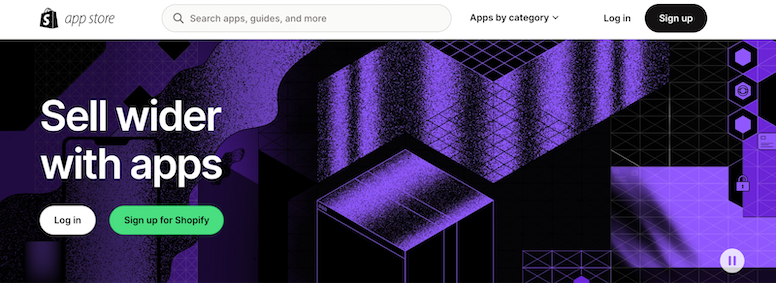
One of the main advantages of Shopify is its app store, which offers a wide range of useful features for online merchants. With thousands of free and paid apps available, Shopify App Store can help merchants customize their online stores and optimize their businesses. Surprisingly, it is not always paid, but some free Shopify apps can be the best supporters for online businesses.
Moreover, Shopify apps are mobile responsive, meaning that they will work well on any device, including smartphones and tablets. They are also strictly evaluated by the Shopify team to ensure they meet quality standards and are compatible with the platform. Best of all, adding apps to a Shopify store won’t affect the store’s performance.
Furthermore, one helpful feature of the Shopify App Store is the powerful search algorithm that recommends the most relevant apps for each merchant’s needs. Additionally, many reviews on Shopify App Store from other merchants who have used them will give potential users insight into the app’s usefulness and ease of use.
#2. Shopify inventory management
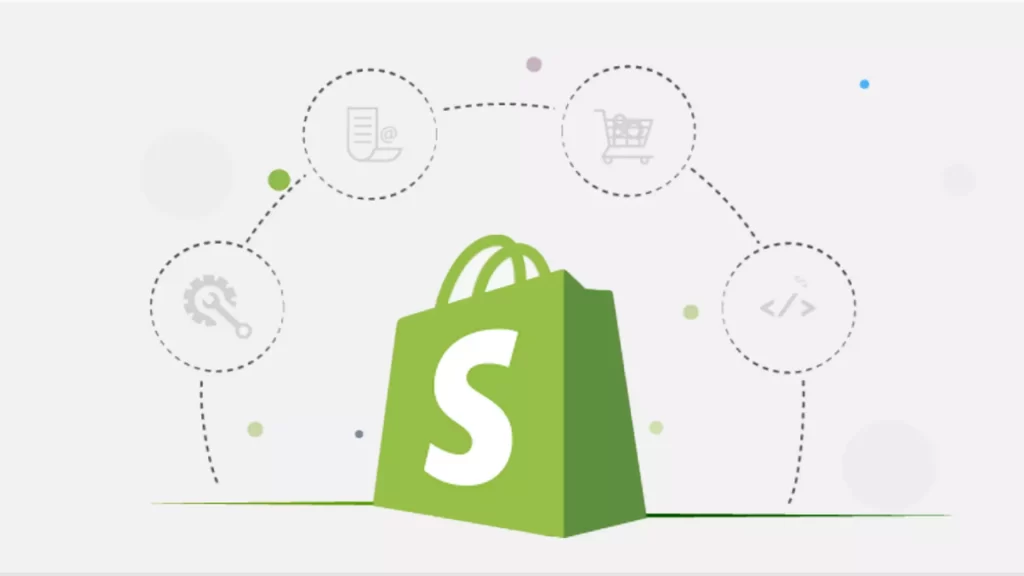
Going on with the Shopify review, why don’t we take a look at its inventory management?
Shopify’s basic inventory management system allows merchants to track the levels of inventory on a per SKU basis and for individual variants. The platform also enables merchants to group their products by category, type, season, or sale and easily scan their products using barcodes. These features make it easy for businesses with a simple inventory flow to manage their stock levels and keep track of their products.
However, as businesses scale and add multiple channels, they may need to implement more advanced Shopify inventory management apps. This can be achieved through the Shopify App Store, where they can find a variety of inventory management solutions, such as LitCommerce, that can help sync inventory information across Shopify stores and multiple channels.
#3. Multi-channel & omnichannel
Obviously, what Shopify is used for is creating and managing online stores, but it also supports businesses with two selling features: multi-channel & omnichannel.
Shopify multichannel
Shopify multichannel selling allows merchants to sell their products on multiple channels, such as their online store, social media, marketplaces, and in-person through a point of sale (POS) system.
- Online stores, Shopify’s primary selling channel, are fully customizable to fit the merchant’s brand.
- POS system is designed for brick-and-mortar stores and allows merchants to manage their inventory and sales data across multiple locations.
- Shopify buy buttons allow merchants to embed product listings on external websites, social media channels, or blogs.
Shopify omnichannel
Answering the question “Is Shopify worth it?”, the answer is definitely Yes. Shopify also offers an omnichannel feature, which is particularly useful for brick-and-mortar businesses. This feature allows merchants to integrate their physical store with their online store, giving customers a seamless shopping experience across all channels. For example, customers can buy products online and pick them up in-store or return products purchased online to a physical store.
#4. Shopify SEO & marketing
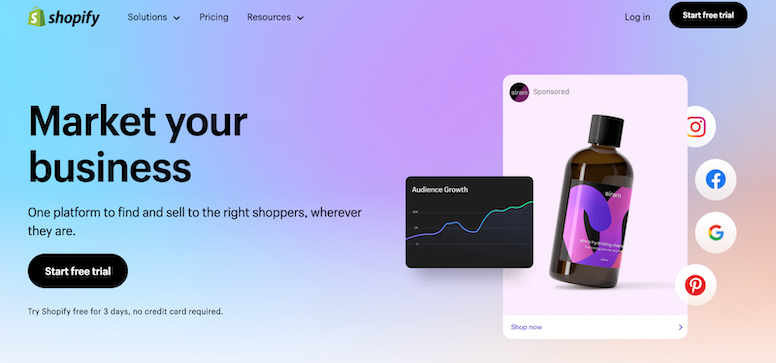
Shopify has a range of SEO and marketing features to help merchants boost their online visibility and drive traffic to their stores.
One of the most significant advantages of Shopify’s SEO capabilities is the ability to customizable meta titles and descriptions, canonical tags to prevent duplicate content, and the ability to edit robots.txt files. That makes it easier for search engines to crawl and index the site. In addition, Shopify has an intuitive blogging platform, allowing store owners to create and publish quality content to engage with their target audience.
When it comes to marketing, Shopify has built-in tools to create targeted email campaigns, social media integrations, and retargeting ads. Shopify also offers integrations with popular marketing platforms such as Mailchimp and Google AdWords. These features can be especially useful for Shopify stores that need to attract new customers.
#5 Shopify reporting & analytics
When it comes to reporting and analytics, how does Shopify work to support your online store?
Shopify’s analytics dashboard provides valuable insights into a store’s performance, allowing store owners to make data-driven decisions about their business. The dashboard is customizable, allowing users to create reports on a wide range of metrics, including sales, traffic, and customer behavior. In addition to the Shopify review, the reports can be viewed on a daily, weekly, or monthly basis, providing store owners with a comprehensive overview of their store’s performance.
What’s more, the platform’s analytics features also integrate with other tools, such as Google Analytics and Facebook Ads, making it easy to track the effectiveness of marketing campaigns and other initiatives. These features help store owners understand how their customers are interacting with their store and can help identify areas for improvement.
#6. Shopify internationalization

Shopify internationalization is a feature that enables businesses to sell their products in different languages and currencies. This eCommerce platform has been designed to cater to a global audience and has several built-in features that make it easy to create multi-lingual stores.
However, there are both pros and cons of Shopify in its internationalization function. The platform provides merchants with the ability to translate their store content into different languages, making it easier for international customers to understand and purchase products.
On the other hand, it can be challenging to manage multiple currencies and taxes. Merchants may need to work with third-party apps to ensure that their store can handle currency conversion and taxes correctly.
#7. Shopify dropshipping
Dropshipping has become a popular Shopify business model. It’s easy for merchants to set up and manage a dropshipping store with low startup costs and no need to purchase inventory upfront. However, there are some pros and cons of Shopify you should consider.
Talking about this article of Shopify review, Shopify’s integration with various dropshipping apps (like Oberlo and Modalyst) simplifies the process of finding and working with suppliers. Additionally, partnered with leading shipping companies like DHL and UPS, Shopify offers flexibility in managing shipping rates and options based on factors like product weight and value, delivery time, and discounts.
However, it’s important to note that the competition can be high in the dropshipping industry, and margins may be lower due to the increased competition. When running a Shopify dropshipping business, you have to research and carefully select suppliers to ensure timely and reliable order fulfillment.
#8. Shopify sales tax
When selling online, Shopify store owners also should pay attention to sales tax. The platform provides a built-in sales tax system that allows merchants to set up sales tax rates for their products based on location. This feature is particularly helpful for merchants to automate the tax calculation process, which saves time and ensures accuracy.
Shopify also provides a variety of resources for merchants to learn about sales tax laws and compliance requirements, which can be complex and vary depending on location.
One of the downsides of Shopify’s sales tax system is that it only supports automatic tax calculation for the United States and Canada, which might be a challenge for merchants selling in other countries. In compensation, there are third-party apps available on the Shopify App Store that can help merchants with sales tax compliance in other countries.
Shopify Reviews: FAQ
Yes, Shopify is a legitimate and reputable eCommerce platform that has been in operation since 2006 and is used by over 1 million businesses worldwide. This eCommerce platform provides secure and reliable online store functionality, payment processing, and inventory management for businesses of all sizes. Additionally, Shopify offers a range of beautifully-designed templates, third-party apps, and integrations to enhance functionality and meet specific business needs. The review app for Shopify is an add-on application that allows customers to leave reviews of pros and cons of Shopify products. Some popular review apps for Shopify include Yotpo, Judge.me, and Loox. Some of the best Shopify print-on-demand apps include Printful, Gooten, and Printify. These apps allow store owners to create and sell custom products without having to hold inventory or handle production themselves.
Is Shopify Worth It?
In conclusion, Shopify is a powerful and reliable platform for online businesses compared to other Shopify competitors on the market. However, it’s important to weigh both pros and cons of Shopify before making a purchase decision.
The platform’s ease of use, flexibility, and a vast selection of themes and apps make it ideal for entrepreneurs, especially the non-tech-savvy. Additionally, its robust reporting and analytics, along with internationalization capabilities, enable businesses to grow and expand their customer base.
Overall, in this Shopify review article, Shopify has its drawbacks, such as transaction fees and limited customization options. However, the pros of Shopify far outweigh the cons. Accordingly, for small to medium-sized businesses looking to sell online, Shopify is definitely worth considering.
For more valuable information, regarding selling on Shopify, check out LitCommerce’s Retailers Blog and join our Facebook community. Also,, if you have any further questions, don’t hesitate to contact us. We are always honored to give a helping hand!



